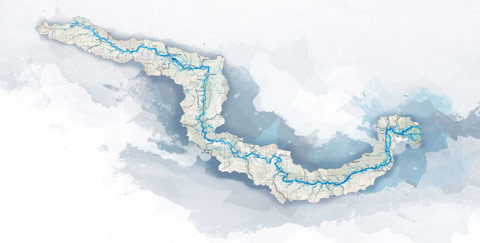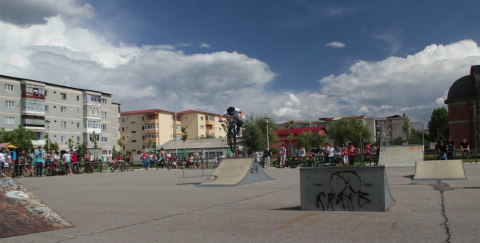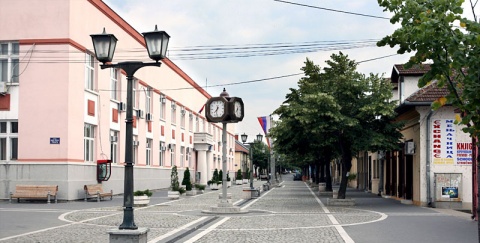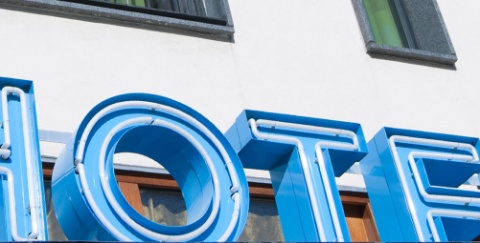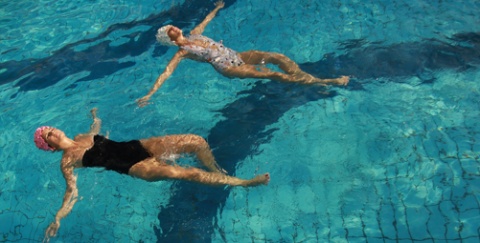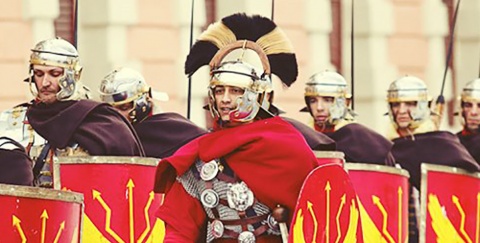
Roman settlement Sarmizegetusa (“fortress on the top of the hill”) should not be confused with Sarmizegetusa Regia, the ancient Dacian royal stronghold (and a UNESCO World Heritage Site), situated 40 km northeast. The star of Ulpia Traiana Sarmizegetusa rose immediately after the final battle of Sarmizegetusa (106 AD), ending the Dacian wars that began on 25 March 101 AD. Trajan’s legions, using also the new bridge on the Danube built by Apollodorus of Damascus, destroyed the royal stronghold. Rather than being captured, the Dacian king Decebalus committed a suicide. The victory over Decebalus and his suicide are depicted on Trajan’s Column (Rome).
The reorganised and reconstructed new Roman province Dacia needed a new capital. Ulpia Traiana Sarmizegetusa developed from a small fort (castrum) and a camp of IV Flavia Felix Legion in a strategically important location – near the Gates of Transylvania. The location was chosen because of its military and commercial position near the Gates of Transylvania. The Roman Senate celebrated the establishment of the city with new coins. Immediately after, the new provincial capital became a colonial city. Emperor Hadrian honoured Trajan with the new city name Colonia Ulpia Traiana Augusta Dacica Sarmizegetusa. To the existing 33 hectares of the walled, rectangular urban area (500 x 600 metres) 50–80 hectars of additional walls (extra muros) were added for public monuments, houses, tombs and temples. The legion went to Apulum (Alba Iulia) and Ulpia Traiana Sarmizegetusa became the civilian headquarters with 25,000 inhabitants, a lot more than in the modern-day village (population: 1,300). The amphitheatre was one of the most beautiful edifices. Built under Emperor Antoninus Pius (ca. 160 AD), gladiators and beasts would fight here in front of 5,000 spectators. It was the only Roman amphitheatre in Dacia and the only one in modern Romania. After 271 AD, when Romans left Dacia, the circular building was blocked with tombstones to protect the remaining inhabitants, who probably integrated with the local Dacians. The temples of Liber Pater and Goddess Nemesis, the sanctuary of Asclepius and Hygeia and the Great Temple (43.6 x 34 metres), built in the 2nd century, after Marcomannic Wars, were the largest ones in the Roman Dacia Two glassblowing workshops were discovered here. After a visit to the necropolis, see the impressive Praetorium Procuratoris, the seat of the financial procurator of Dacia on Cardo Maximus, the main street, and near the Northern Gate. This is where the archeologists from Cluj University have started a new excavation campaign in 2013. After the excavations and the granary (horreum), you arrive at the Forum Vetus (Old Forum) with a monumental entrance gate, Tetrapilum (quadruple triumphal arch).
The Archaeological Museum is opposite Tetrapilum. It was founded in 1924, renovated in 2006-2010. It was re-opened on 18 September 2010, Trajan’s birthday. The museum has a new exhibition of experimental archaeological reconstructions of Roman military equipment, jewellery, pottery. Among the 30,000 artefacts Medusa’s Head certainly stands out. The latest excavations will help gain deeper knowledge about the entrance to the forum area.
DANUBE.TRAVEL has no control over the website content generated by users and/or visitors, neither such content represents a statement, opinion, recommendation or rating by DANUBE.TRAVEL. For further information please refer to DANUBE.TRAVEL – General Website Terms and Conditions of Use.
 EN
EN DE
DE
